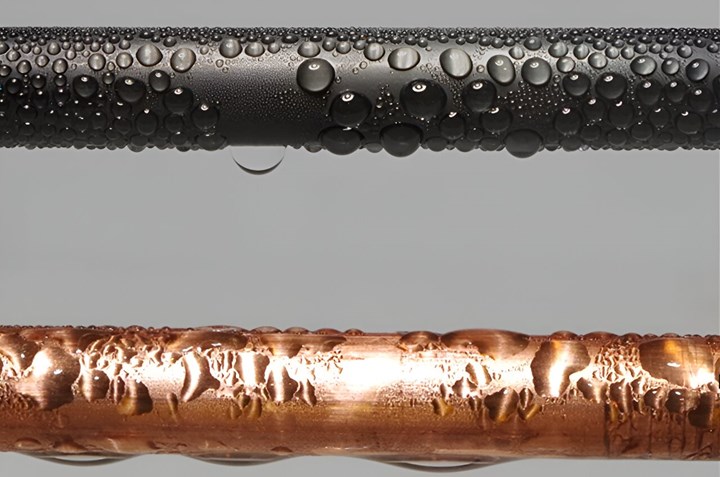Coatings Tests Underway to Make Power Gen More Efficient
Photo Credit: University of Illinois Urbana-Champaign Professor Nenad Miljkovic, a professor of mechanical science and engineering at University of Illinois Urbana-Champaign (UIUC) Grainger College of Engineering is the project lead on development of a new coating made with fluorinated diamond-like carbon (F-DLC) for steam condensers used in fossil fuel steam-cycle generation.

Photo Credit: University of Illinois Urbana-Champaign
Professor Nenad Miljkovic, a professor of mechanical science and engineering at University of Illinois Urbana-Champaign (UIUC) Grainger College of Engineering is the project lead on development of a new coating made with fluorinated diamond-like carbon (F-DLC) for steam condensers used in fossil fuel steam-cycle generation.
Estimates are if coal and natural gas power generation were only 2% more efficient, 460 million fewer tons of carbon dioxide would be released into the atmosphere and 2 trillion fewer gallons of water would be used, according to an article in the journal Nature Communications.
Fossil fuel power depends on a steam cycle, when fuel is burned to boil water, and the resulting steam spins a turbine for the turbine to drive an electric generator. The steam then reaches a condenser that reclaims water from the steam and maintains a pressure difference across the turbine so the steam flows. Improving the condensers’ heat transfer properties would allow a pressure difference to be maintained while burning less fuel.
The researchers' new F-DLC coating improves heat transfer because the material is hydrophobic. When the steam condenses into water, it does not form a thin film that coats the surface, like water does on many clean metals and their oxides. Instead, the water forms droplets on the F-DLC surface, putting the steam into direct contact with the condenser and allowing heat to be directly transferred. The researchers found that this improved the heat transfer properties by a factor of 20, which translates to a 2% overall process boost.
"It's remarkable that we can achieve this with F-DLC, something that just uses carbon, fluorene and a little bit of silicon," said Muhammad Hoque, a postdoctoral research associate and the study's lead author. "And it can coat pretty much any common metal, including copper, bronze, aluminum and titanium."
To demonstrate F-DLC's durability, the researchers subjected coated metals to steam condenser conditions for 1,095 days, the longest test reported in the literature. The coated metals maintained their hydrophobic properties for this entire length of time. The researchers also found that the coated metals maintained their hydrophobic properties after 5,000 scratches in an abrasion test.
The research team is now collaborating with UIUC's Abbott Power Plant to study the coating's performance for six months of steady condensation exposure under industrial conditions.
"If all goes well, we hope to show everyone that this is an effective solution that is economically viable," Miljkovic said. "We want our solution to be adopted, because although the development of renewable energy should absolutely be a priority, it's still very worthwhile to continue improving what we have now."
Researchers from Sabanci University also contributed to this study.
This article was partially excerpted from UIUC’s Grainger College of Engineering website.
RELATED CONTENT
-
The Pulp and Paper Industry
The pulp & paper industry has seen tough times, but the business will still be around for many decades; the product is too much in demand.
-
The Role of Valves in HAZOP Studies
Process hazard analysis (PHA) is required by U.S.
-
Metal Additive Manufacturing: the Evolving Road to Adoption and Standardization
Greater knowledge and acceptance of metal AM valve components—especially with various standardization efforts underway—will spur the technology’s growth.







 Unloading large gate valve.jpg;maxWidth=214)


